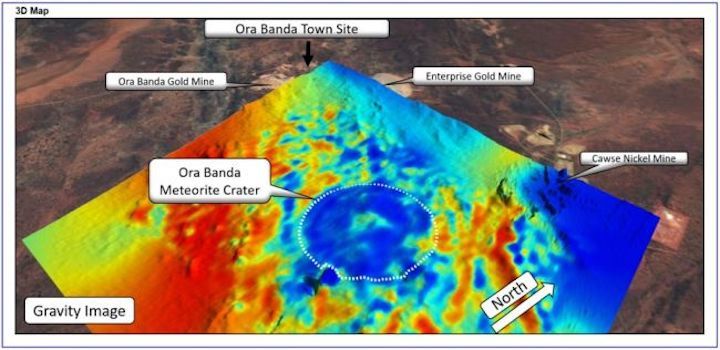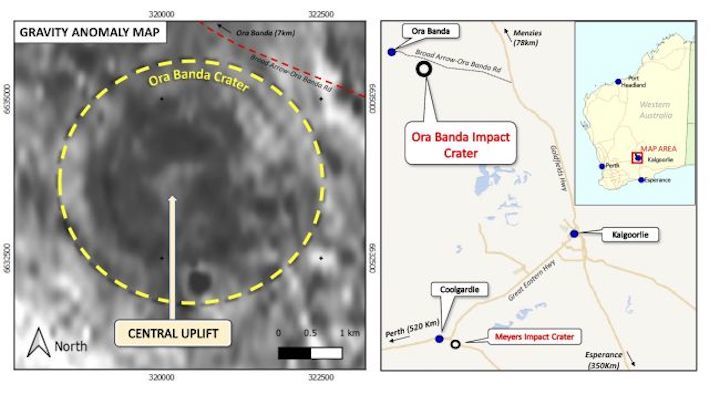30.09.2020
The meteorite may have been longer than two football fields.

Gold miners in the Australian Outback recently discovered a gigantic meteoritecrater dating to about 100 million years ago, back when dinosaurs roamed the Earth.
Found near the Western Australian town of Ora Banda, the newly dubbed Ora Banda Impact Crater is about 3 miles (5 kilometers) across. This huge hole was likely created by a meteorite up to 660 feet (200 meters) wide, or longer than the length of two American football fields, according to Resourc.ly, a Western Australia news outlet.
When geologists at Evolution Mining, an Australian gold mining company, came across some unusual rock cores at Ora Banda, they called Jayson Meyers, the principal geophysicist, director and founder of Resource Potentials, a geophysics consulting and contracting company in Perth. Meyers examined the geologists' drill core samples, as well as rock samples from the site, and he immediately noticed the shatter cones — telltale signs of a meteorite crash.
Shatter cones form when high-pressure, high-velocity shock waves from a large impacting object — such as a meteorite or a gigantic explosion (such as would occur at a nuclear testing site) — rattle an area, according to the Planetary Science Institute (PSI), a nonprofit group based in Tucson, Arizona, which was not involved with the new find. These shock waves shatter rock into the unique shatter cone shape, just like a mark that a hard object can leave on a car's windshield.
Because "we know they didn't do any nuclear testing at Ora Banda," the evidence suggests that an ancient impact crater hit the site, Meyers told Resourc.ly.


Now, scientists from Curtin University in Perth are investigating the Ora Banda site on a microscopic level. In particular, the team will examine whether minerals at the site were vaporized and then re-crystallized under high pressures. "The energy released when the [meteorite] impacted would have been more than the combined energy from every atomic test ever conducted," Meyers told Resourc.ly.
Research on zircons and other minerals from the crater will likely reveal when the meteorite struck — right now, Meyers thinks it hit between 250 million and 40 million years ago. (If it struck after the Cretaceous period ended, about 65 million years ago, this meteorite wouldn't have bothered the non-avian dinosaurs, because they were already dead.)
The dinosaur-killing asteroid was much larger and more lethal. That asteroid, which hit the area that is now Mexico's Yucatan Peninsula, was about 6 miles (10 km) wide and left an impact crater about 90 miles (150 km) across.
Quelle: SC
